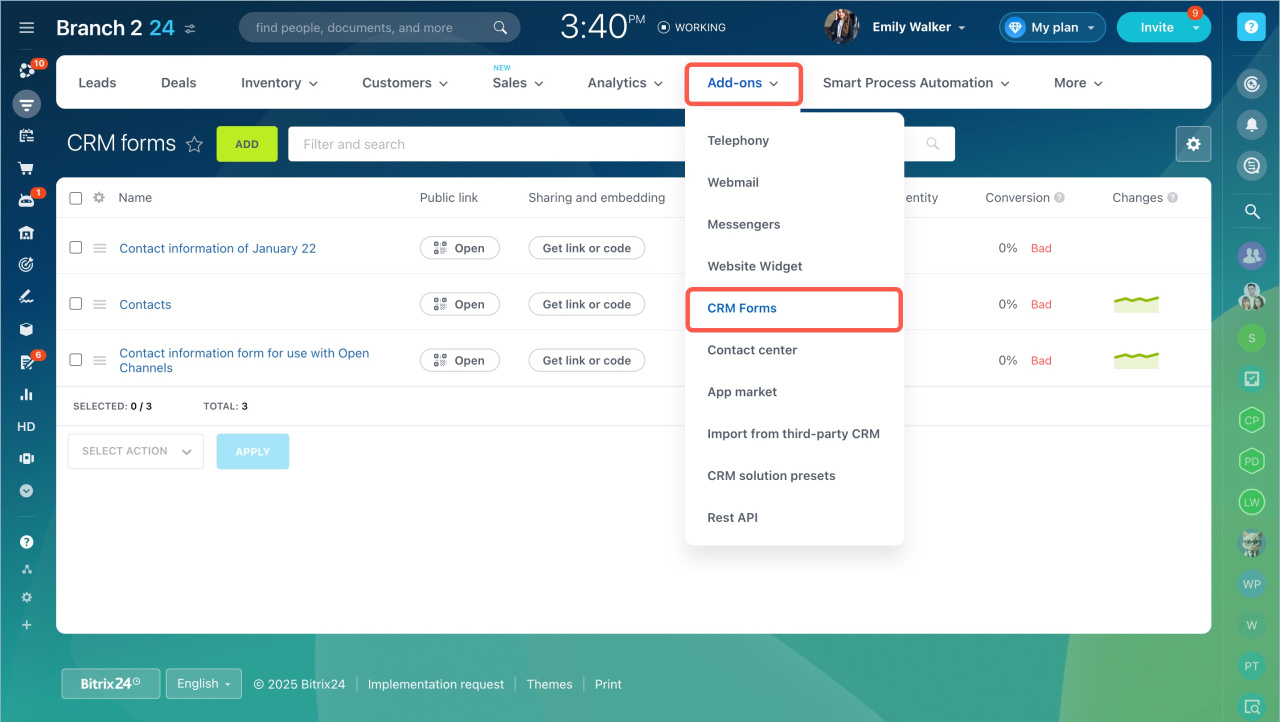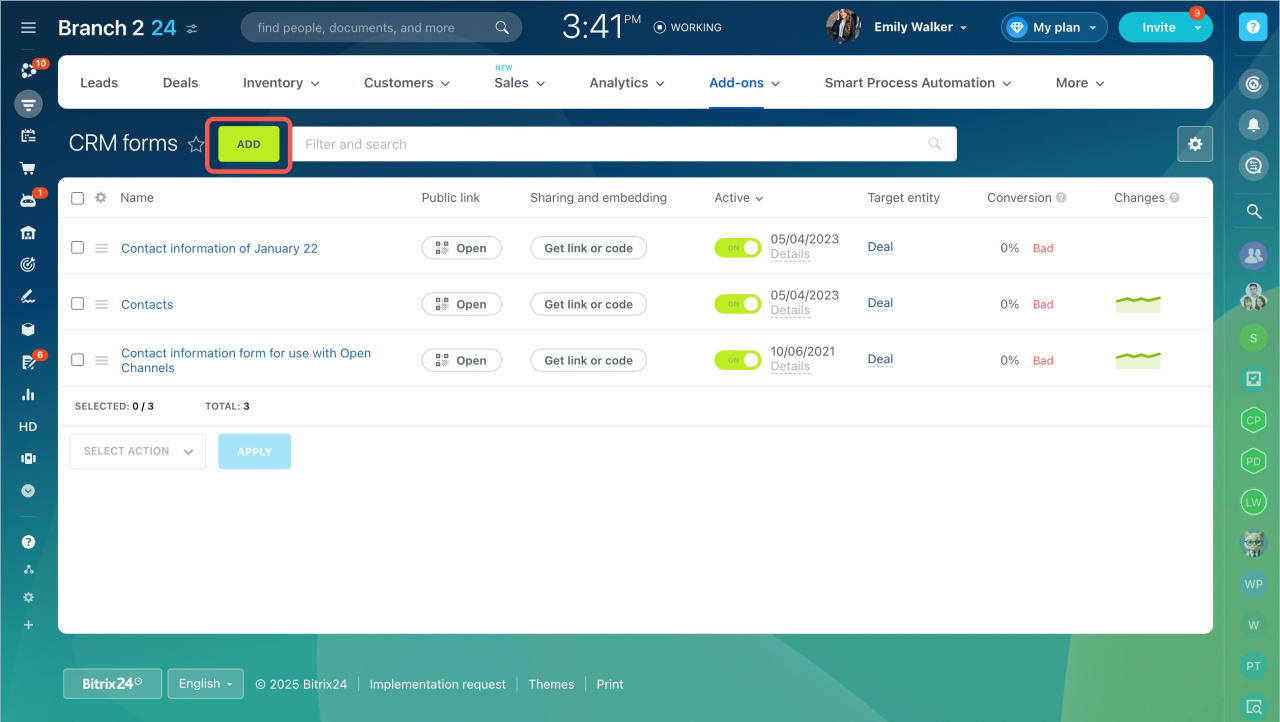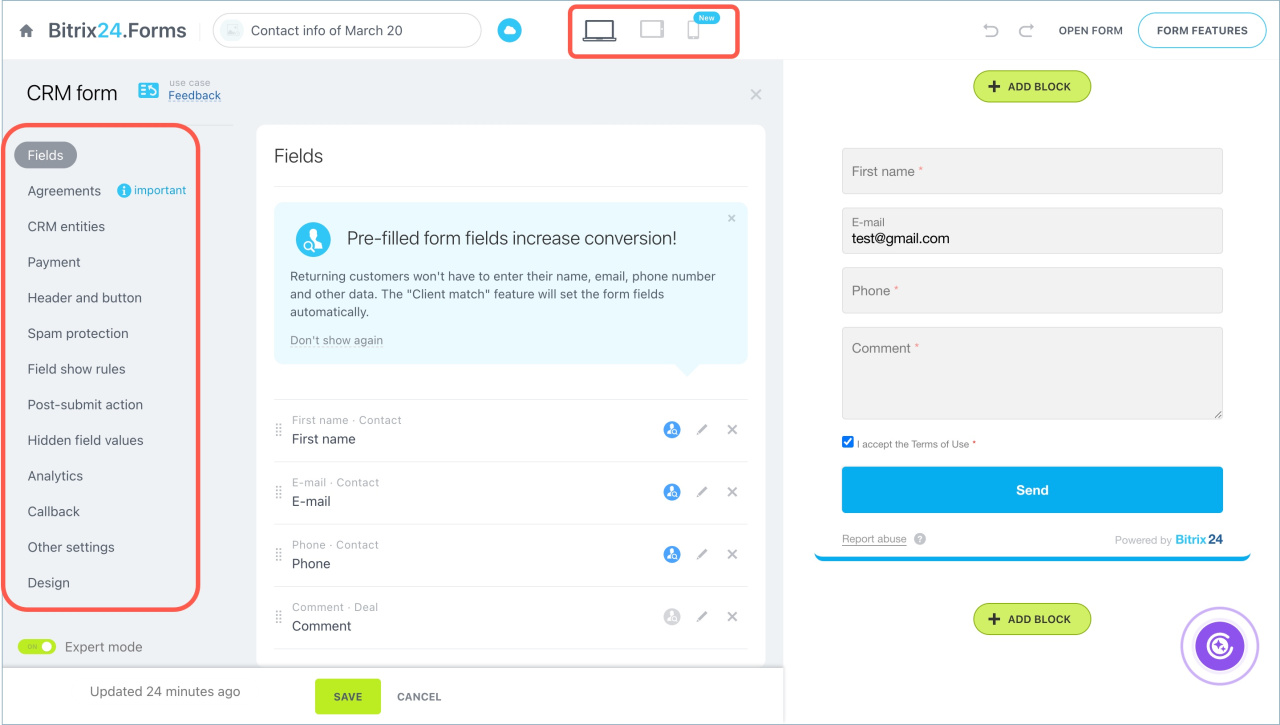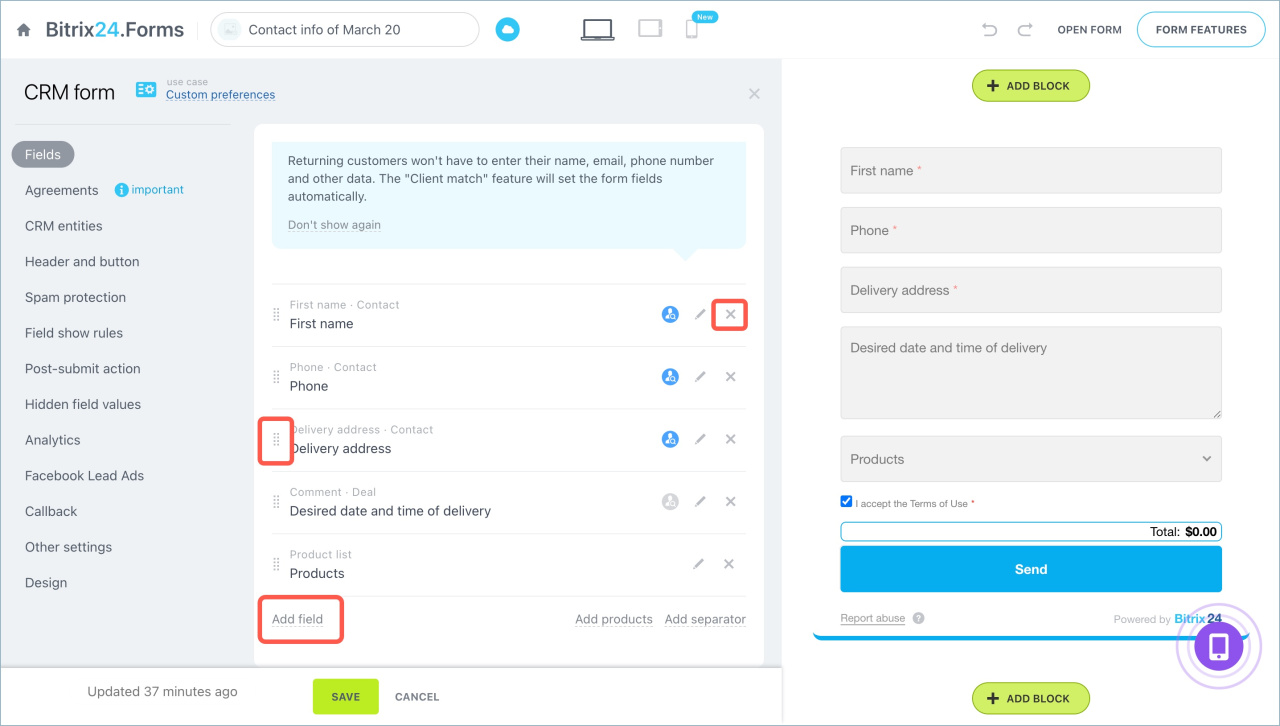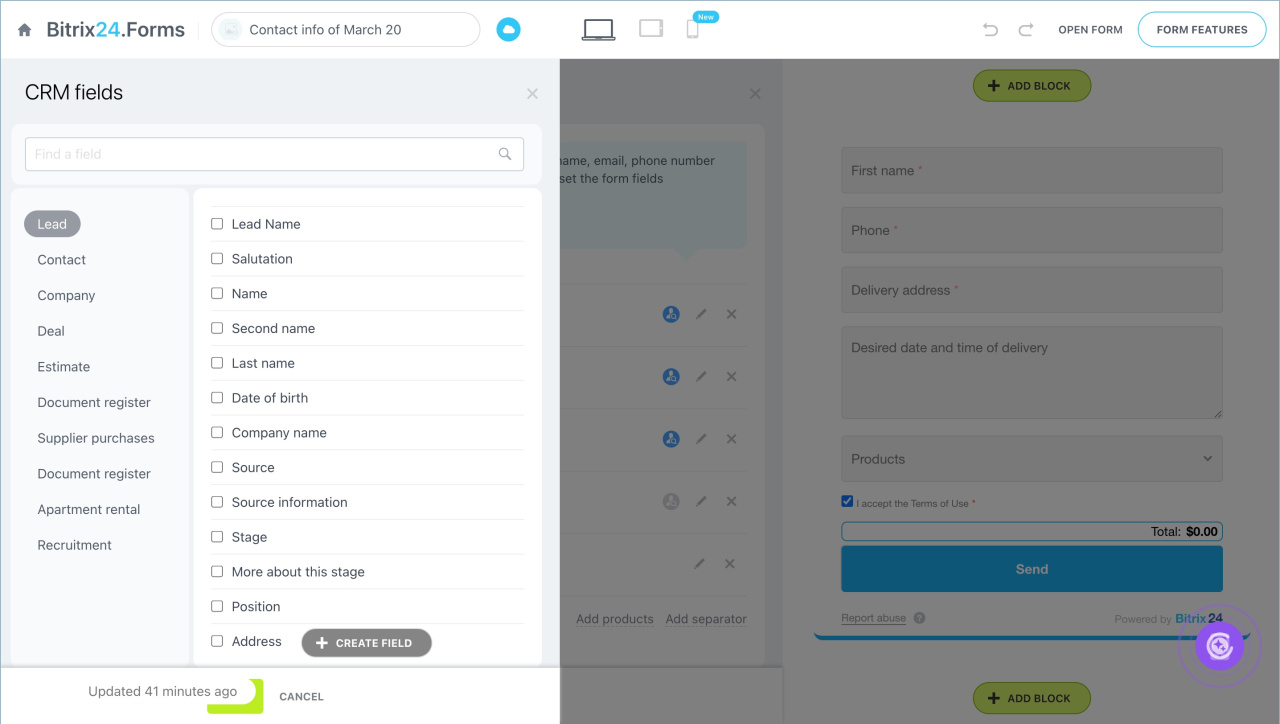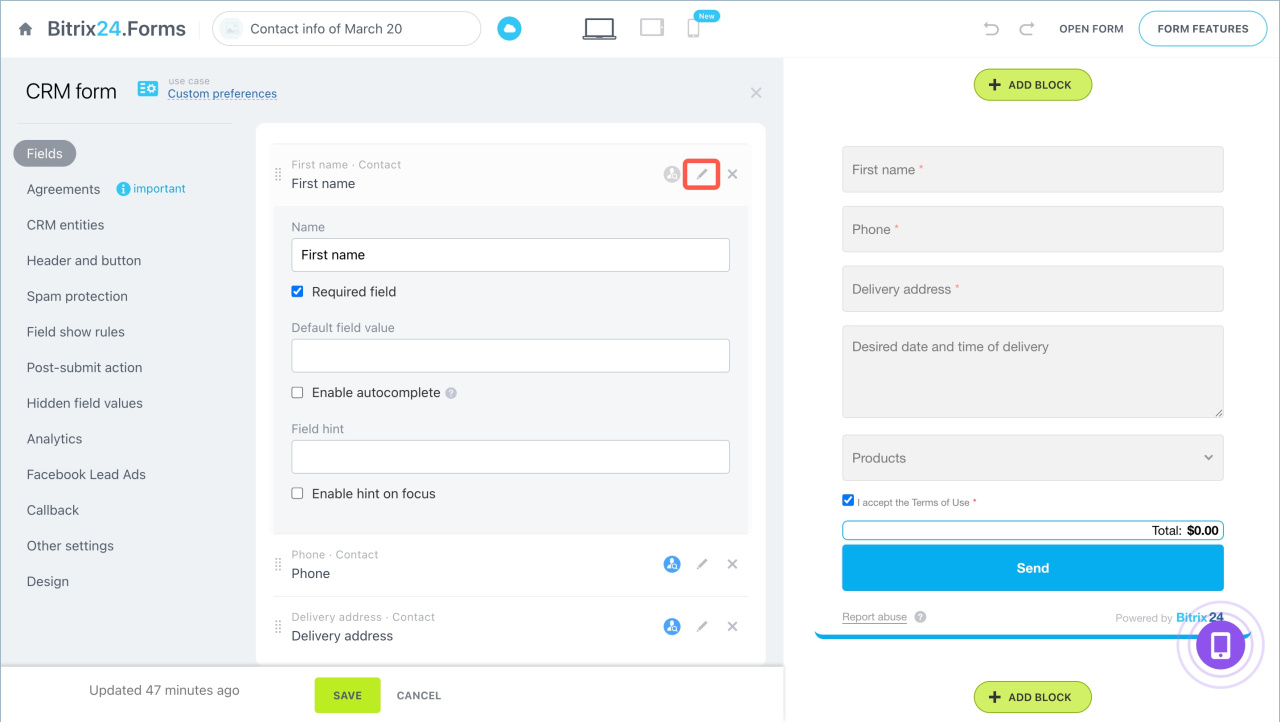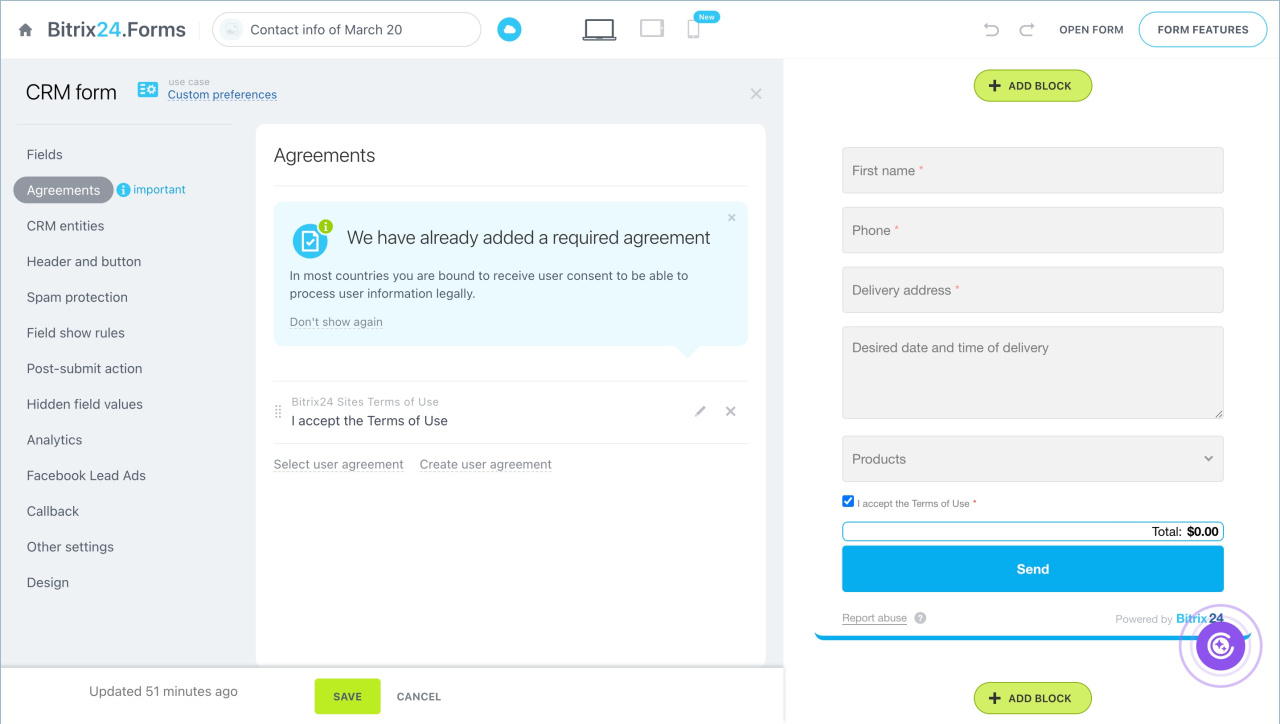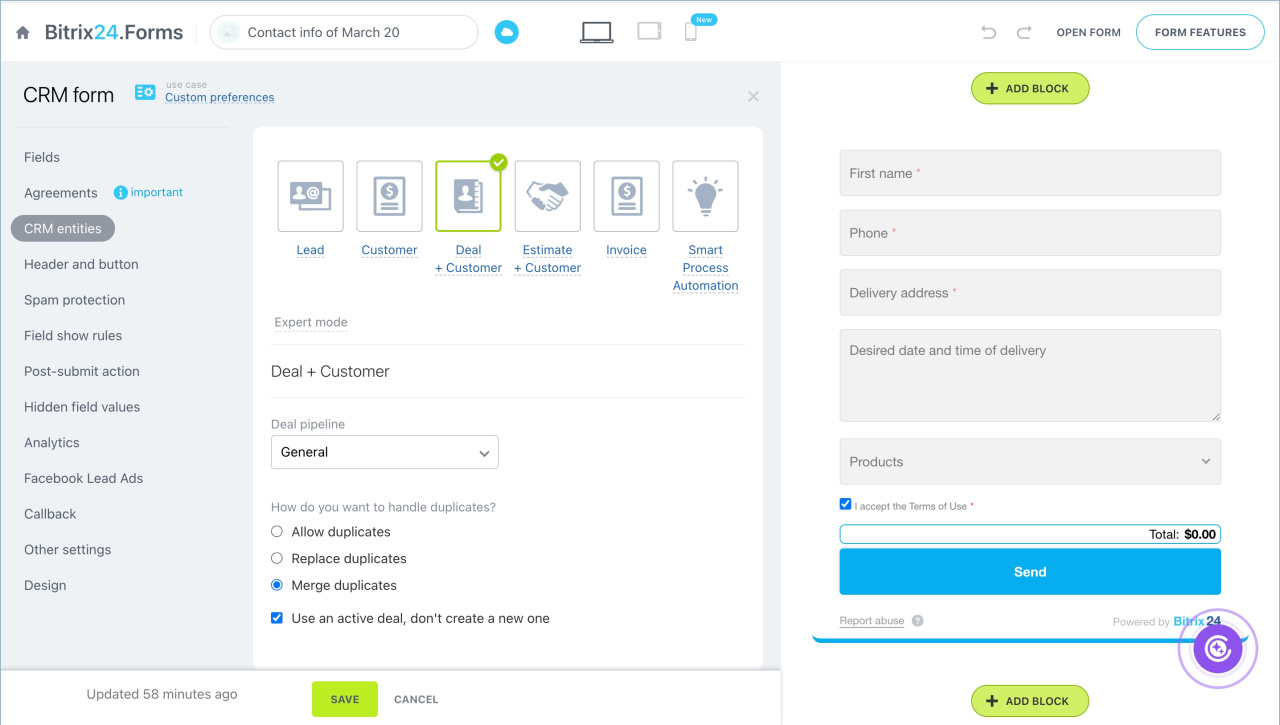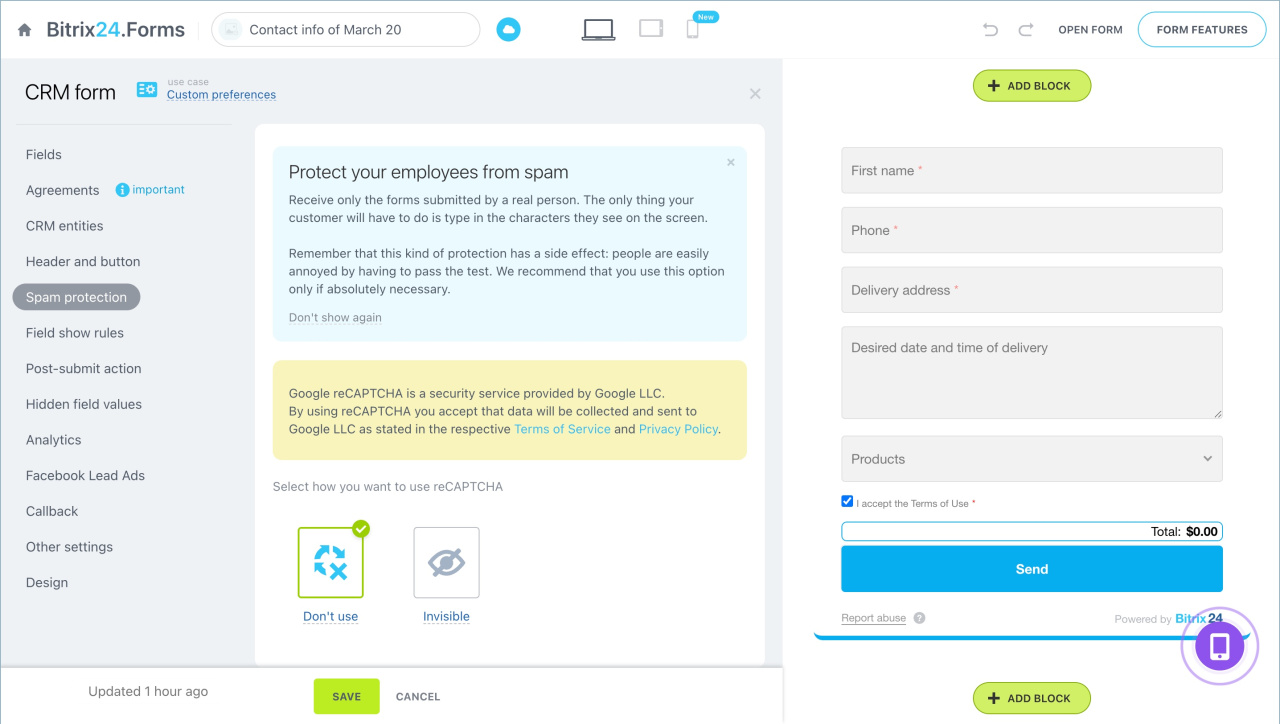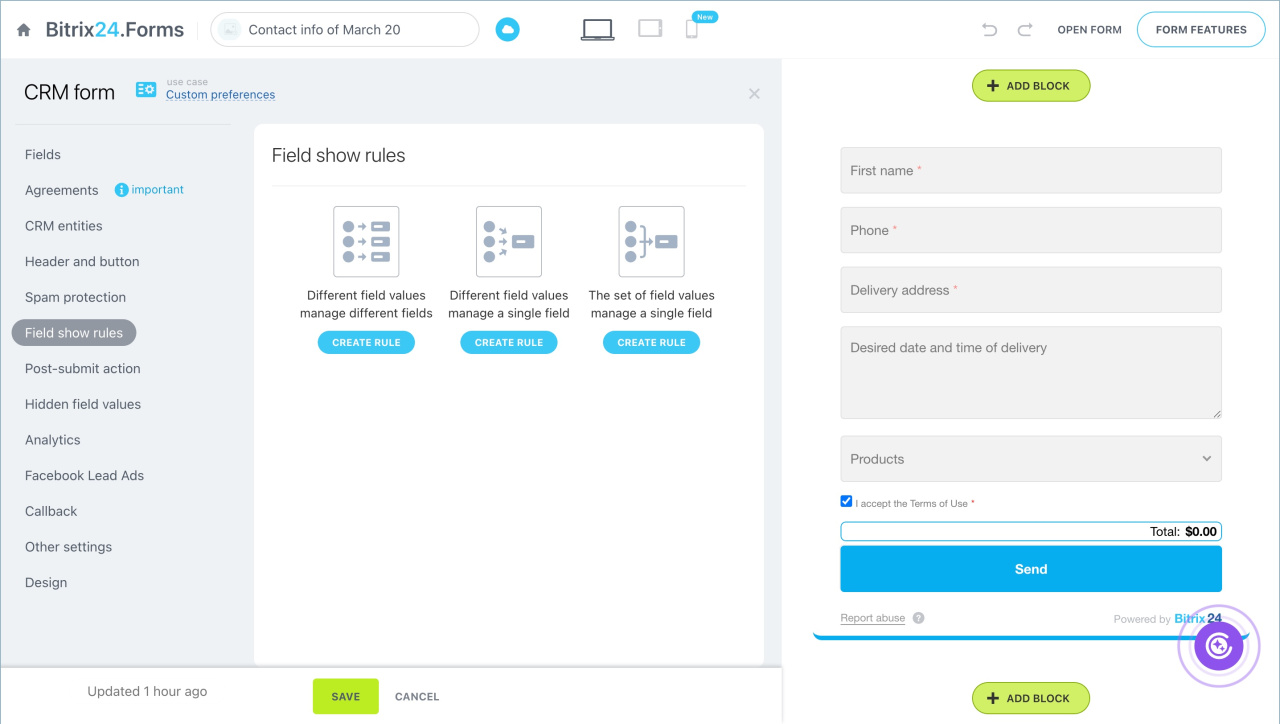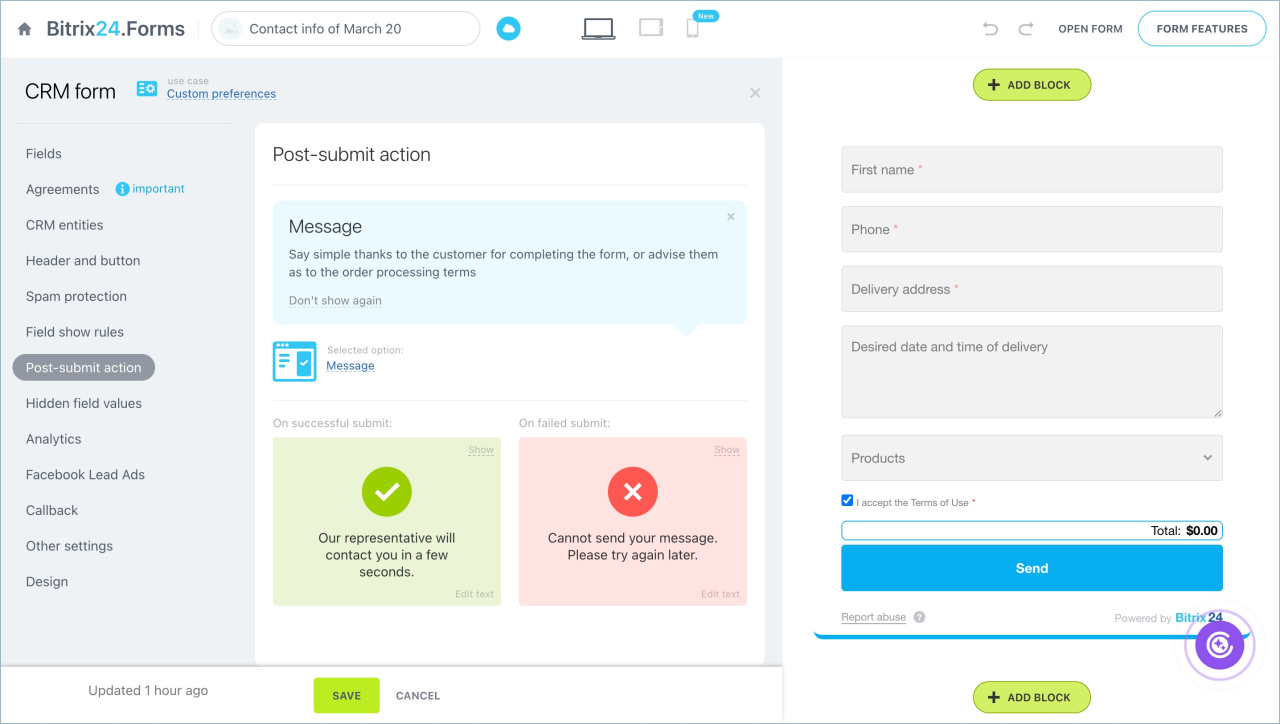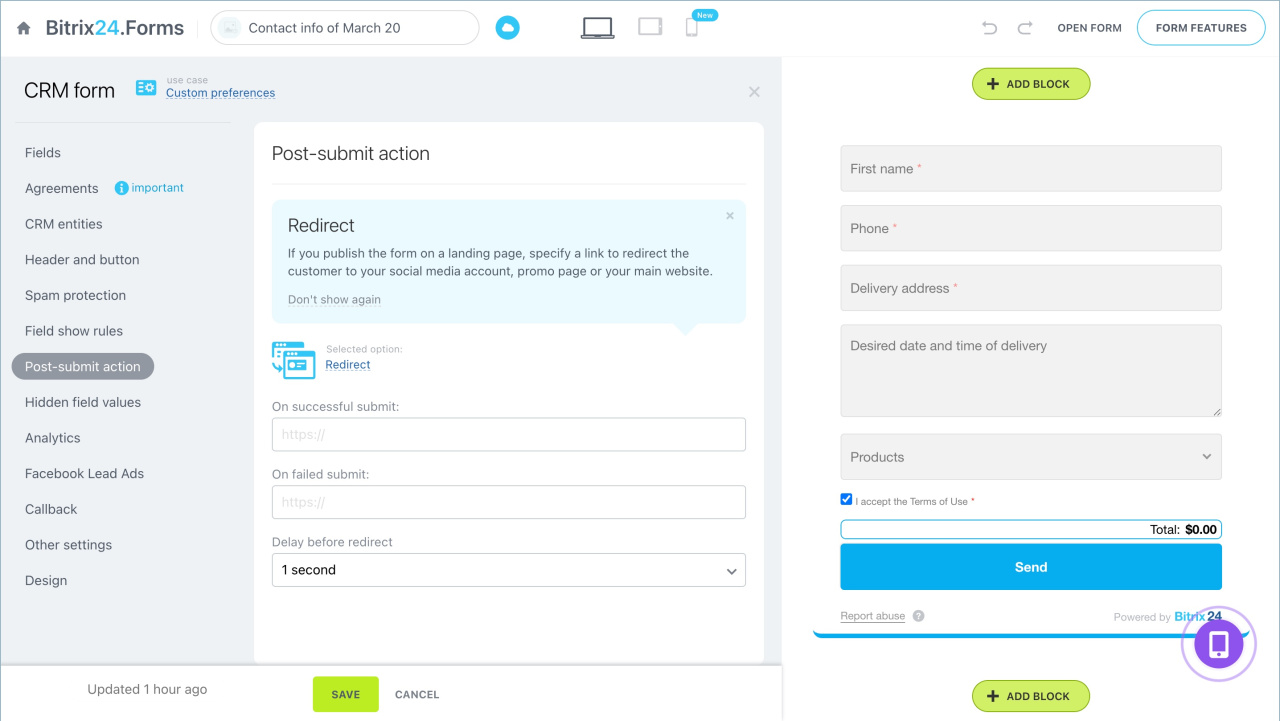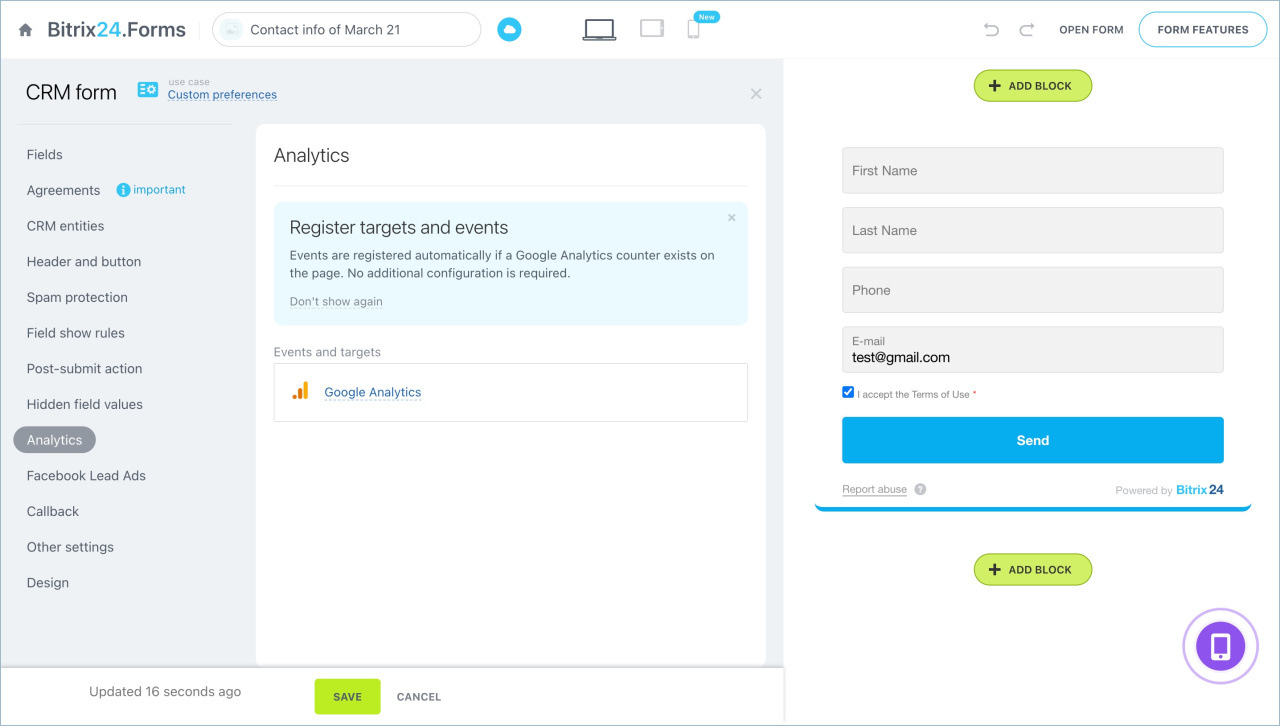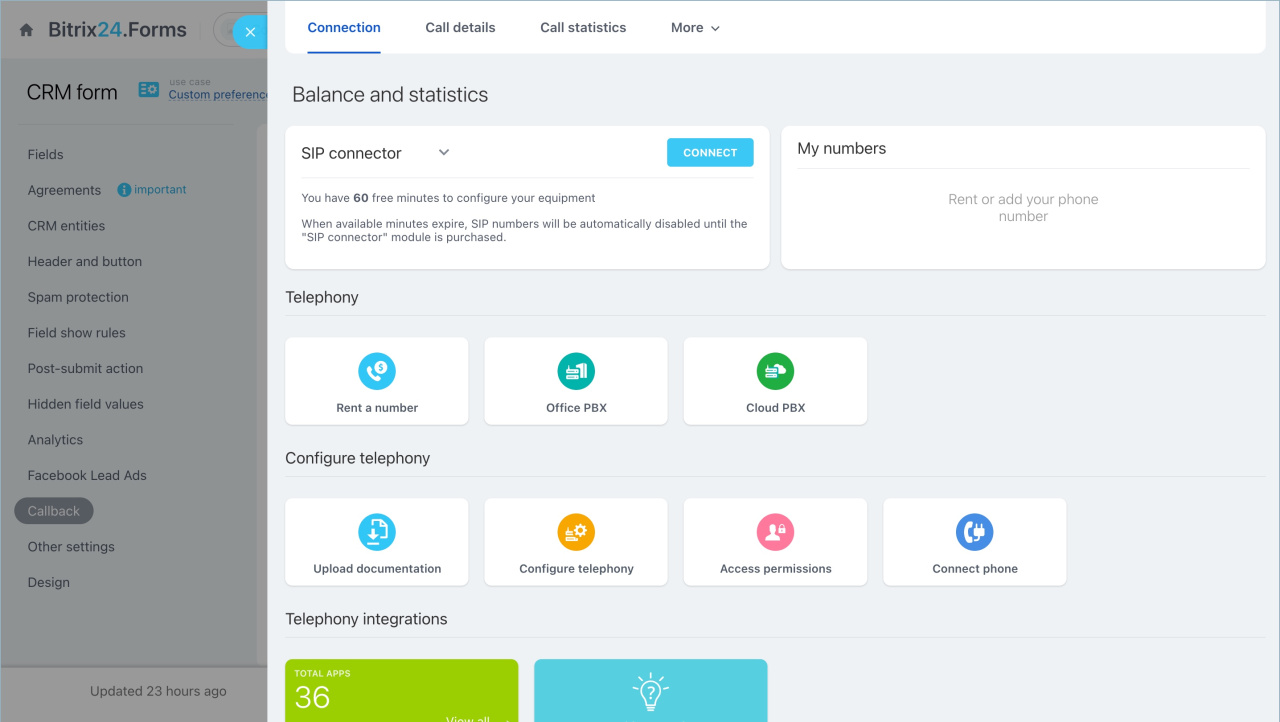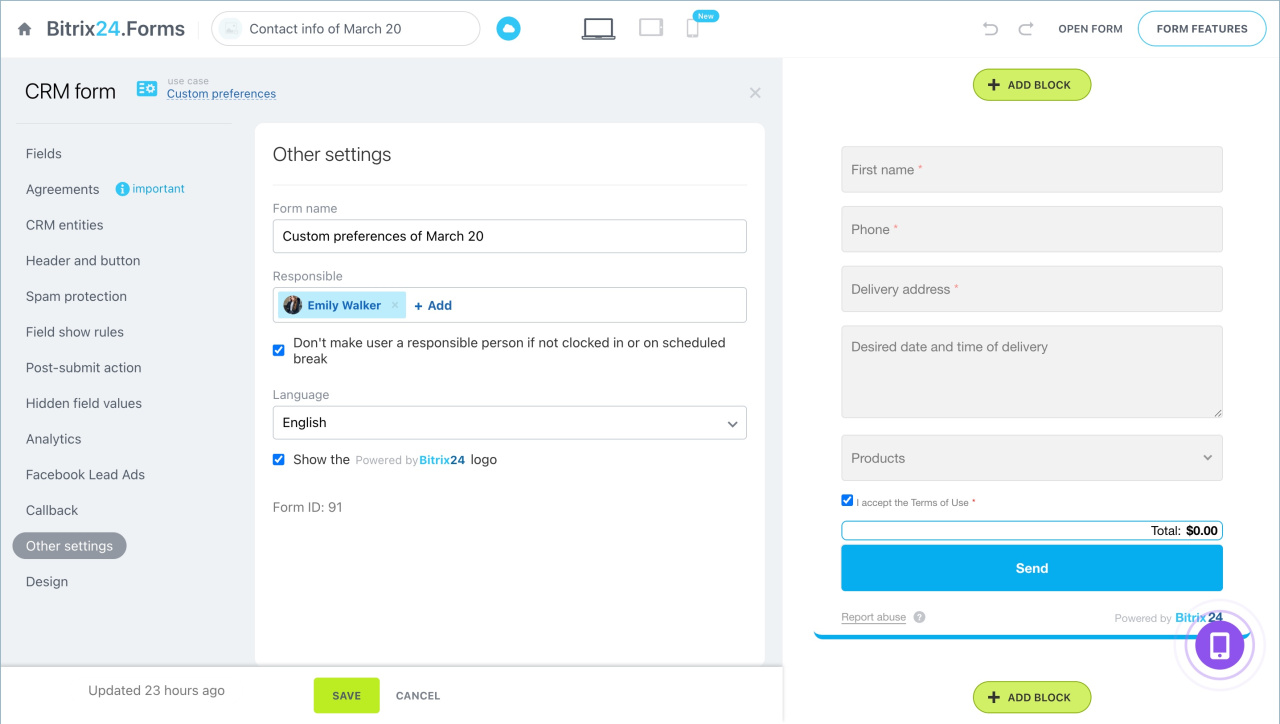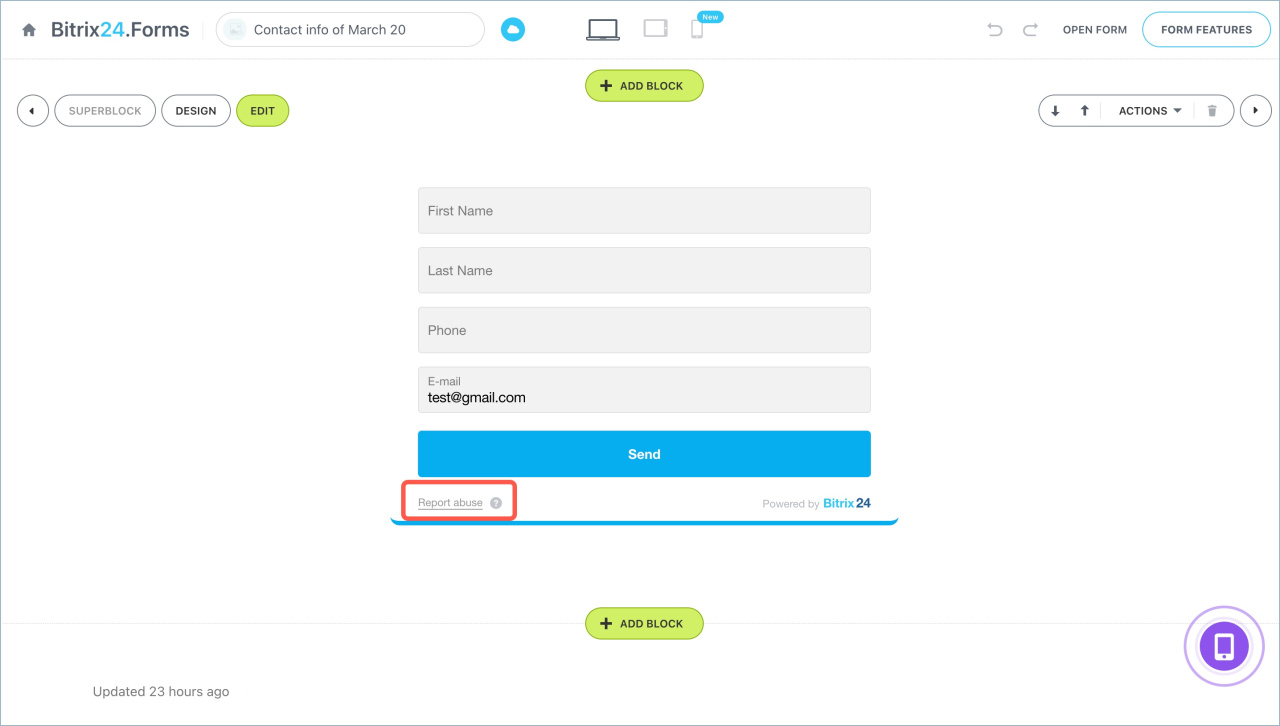CRM forms in Bitrix24 help collect requests, contacts, and feedback. Clients schedule appointments, book services, and place orders on the site, with data from the form automatically saved in the CRM.
In this article:
Create a CRM form
- Go to the CRM > Sales > Sales channels > CRM forms.
- Click Add.
- Choose a CRM form template for a specific task.
- Click Close editor to return to the list of CRM forms.
Configure a CRM form
Let's consider form settings using the Custom preferences scenario as an example.
When you select a template, the CRM form editing page opens. The list of settings is on the left. The form preview is on the right. Click the icons at the top of the screen to check how the form displays on different devices.
Fields. Specify the data the user will enter, like name, email, and phone number. Each scenario has a preset fields, but you can edit them.
- Click the cross to remove a field from the CRM form.
- Drag the icon next to the field name to change the field order.
- Select Add field to include additional fields.
- Choose which CRM item to add a field from, like a contact or a company.
- Check the desired fields and click Add.
Click the pencil to edit a field:
- Change the name
- Make it required
- Set a Default field value
- Enable autocomplete option
- Enable hint on focus
Autocomplete fields in CRM forms
Agreements. Choose a ready-made agreement or create a new one.
CRM entities. Select which items will appear in the CRM when a customer fills out the form.
To set duplicate processing rules, click Expert mode.
If the form creates a deal, select the Deal pipeline and enable the Use an active deal, don't create a new one option. If the option is disabled, a new deal will always be created regardless of duplicate processing settings.
For a smart process, a new item will be created each time the form is filled out.
Header and button. Make the form clearer and more appealing to the customer: create a title and a subtitle, and change the text on the submit button.
Use personalization tags—special symbols that insert client data into the subtitle text when they open the form via a personal link, like the customer's name or a company name.
Difference between the form header, the form name and the page name
Personalization tags in CRM forms
Spam protection. The reCAPTCHA V2 module verifies that a human, not a bot, is filling out the form and blocks suspicious submissions.
Select the reCAPTCHA V2 usage option and, if necessary, specify your keys in the settings.
Field show rules. You can hide or show form fields based on client responses.
Configure field show rules in CRM forms
Post-submit action. Choose what happens after the CRM form is submitted. Three options are available.
Message. Use this scenario to thank the client or explain order processing rules. Set up messages for successful and unsuccessful submissions. To view or edit the text, click the corresponding buttons.
Redirect. Set up a redirect to another site if you need to direct the client to a social media group or a page with delivery information. Specify the redirect links and the pause time.
Submit again. Use this option if several people fill out the form. When a customer submits the form, the data is automatically cleared from the fields. The next customer can fill out the form immediately without reloading the page.
Hidden field values. This setting allows fields to be automatically filled with data not visible to the user. This is necessary to transmit technical information to the CRM, like traffic source.
Default field values in CRM forms
Analytics. Integrate the CRM form with Google Analytics to track its effectiveness: number of submissions, conversions, and other metrics.
Connect Google Analytics to Bitrix24
Facebook Lead Ads. Connect your Facebook Lead Ads forms to Bitrix24 in a few steps. When your client fills out a form on Facebook, the data will automatically go in your CRM.
Callback. This option requires Telephony connection in Bitrix24.
Telephony connection options overview
The client enters their phone number in the form. The manager receives a call with a recorded message, like "New request received." Then The manager is automatically connected to the client.
Other settings
- Form name. By default, it consists of the form scenario and creation date.
- Responsible. Select employees from the list. Items created in the CRM after form submission are distributed among the responsible people in turn. If quick customer response is important, check Don't make user a responsible person if not clocked in or on scheduled break. If all responsible parties are unavailable or your plan does not include time tracking, requests will be distributed in turn.
- Language. Select the form language to adapt it for foreign customers.
- "Powered by Bitrix24" logo. You can enable or disable this option.
Design. Change the appearance of the CRM form: theme, font, element colors, etc.
CRM form design
Check the CRM form before publishing: Bitrix24 is not responsible for its content. If we receive mass violation reports, we will review complaints and take action.
Report a violation in CRM forms
In brief:
- CRM forms in Bitrix24 help collect requests, contacts, and feedback. When a client fills out a form, the data is automatically saved in the CRM.
- To create a form, go to the CRM section > Add-ons > CRM forms. The scenario list includes templates for various tasks.
- Forms can be edited: add fields, customize design, set post-submission actions.
- The Callback scenario works only with Telephony connected to Bitrix24.
- CRM forms can be integrated with third-party services, like Google reCAPTCHA and Google Analytics.

